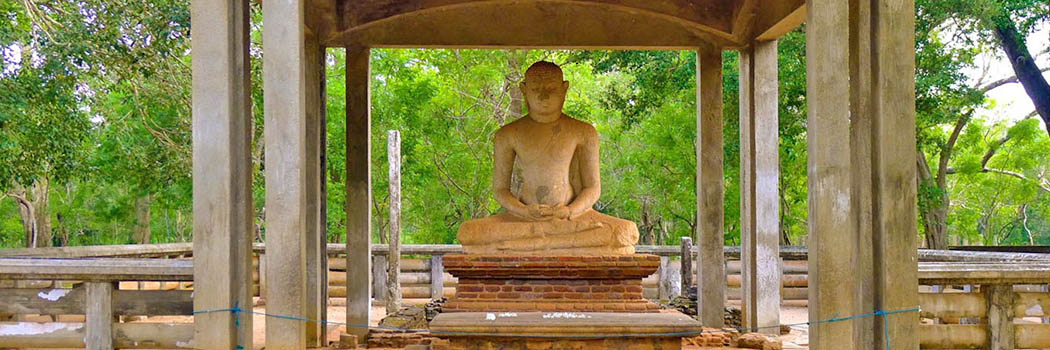
The Lotus flower is of great significance in the life of the Buddha.
On the night of the "Esala" full moon, when the future Buddha was conceived in the womb of his mother Mahamaya she dreamt of a white elephant entering her womb carrying a white lotus in its trunk. Again after nine months when the future Buddha was born in Lumbini it was said that he treaded on seven lotus flowers that sprang up from the ground to receive his feet.
After attaining enlightenment the Buddha carried on his mission for 45 years and towards the end of his life it was again the Lotus Sutra (Saddharma Pundarika Sutra) he preached at the Gijakoota Parvatha (Eagle Peak) and declared it the Supreme Sutra of all Sutras he had preached earlier. This Saddharma Pundarika Sutra could be considered the last Major Sutra preached by the Buddha before attaining Parinibbana.
The Lotus Sutra is widely regarded as one of the most important and influential sutras, or sacred scriptures, of Buddhism. Is thought to contain the buddha’s final teaching complete and sufficient for salvation.
The earliest known Sanskrit title for the sūtra is the "Saddharma Puṇḍarīka Sutra", which translates to Scripture of the Lotus Blossom of the Fine Dharma in English. The sutra, composed largely in verse, has a total of 28 chapters and contains many charms and mantras (sacred chants).
Several different Chinese translations were made from the original Sanskrit version of the sutra, among which, the translation by Kumarajiva (344–413), titled Miao-fa-lian-hua-jing (Jpn. Myoho-renge-kyo), is considered to be particularly outstanding and facilitated the spread of the teaching in China and Japan, where common belief held that the simple act of chanting it would bring salvation.
There are also numerous historical facts that prove the strong influence the Lotus Sutra had in ancient Sri Lanka. This is elaborated further under the
Sri Lanka tab.
Manuscripts of the lotus sutra;
Images and scenes inspired by the Lotus Sutra can be seen in the murals adorning the caves of the Mogao Buddhist complex, near the oasis-town of Dunhuang, in the present-day Gansu Province in China. An estimated 4,000 copies of the Lotus Sutra were also found in one of the caves, commonly called the Library Cave or Cave 17. They are now dispersed across various institutions in Beijing, Paris, St Petersburg and London. In the British Library's collection, the Lotus Sutra outnumbers all the other Chinese Buddhist texts brought back by Sir Aurel Stein during his second expedition to Central Asia (1906-1908). There are over a thousand manuscripts, some of which are scrolls measuring up to 13 meters long.
A rare manuscript of this sutra was also discovered in the Gilgit region of ancient India in 1931 (now part of Pakistan).
The document dates back to the 5th century, the manuscripts were discovered in a wooden box in a circular chamber inside a Buddhist stupa.
References:
(https://www.britannica.com/topic/Lotus-Sutra)
(https://www.bl.uk/projects/lotus-sutra-manuscripts-digitisation)
(https://www.bbc.com/news/world-asia-india-17935041)
(https://whc.unesco.org/en/list/440/)
(https://en.wikipedia.org/wiki/Mogao_Caves#The_Library_Cave)